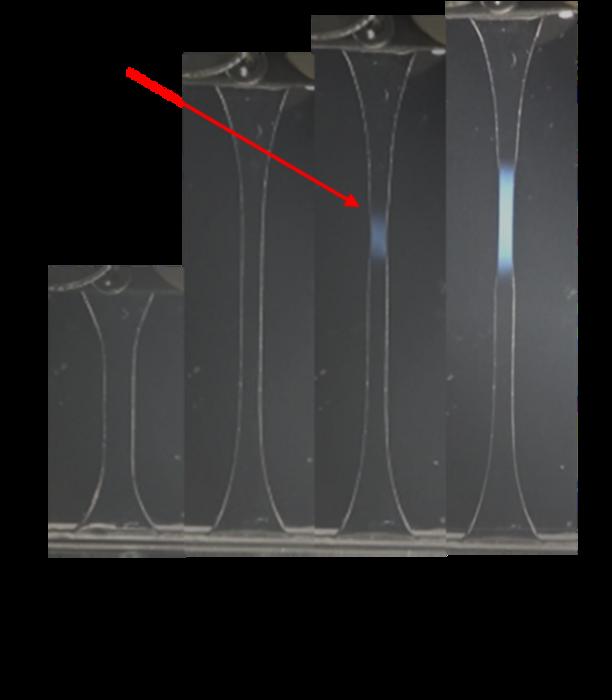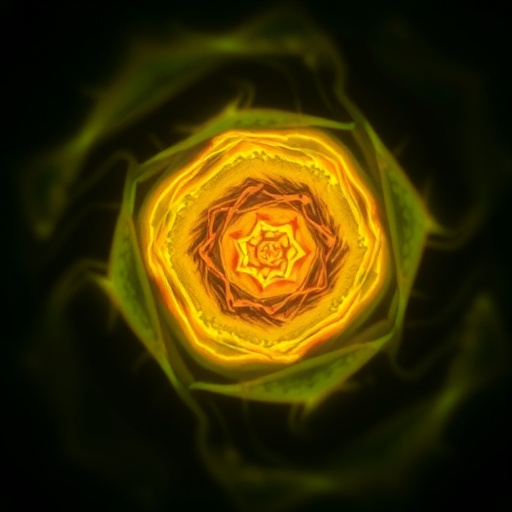
Revolutionary Self-Strengthening Hydrogels: A Leap Towards Advanced Material Science
Recent advancements in polymer science have unveiled a groundbreaking development in double network hydrogels that could redefine the future of soft materials. This novel technology offers a stunning ability to automatically self-strengthen under mechanical stress, a property seldom seen in traditional hydrogels. At the core of this innovation is the integration of mechanochemistry, which enables these materials to not only endure stress but to actively enhance their strength in response to deformation. The implications of this work extend into numerous fields including biomaterials, soft robotics, and even medical applications.
Hydrogels are intricate materials composed primarily of polymer networks infused with significant amounts of water. They possess a unique ability to allow the permeation of substances smaller than their structural mesh size, making them highly versatile in a range of applications. However, their inherent structure also makes them vulnerable to mechanical stress, often resulting in the cleavage of chemical bonds. This process leads to a reduction in mechanical integrity and may culminate in material failure. Understanding the mechanism behind this fragility is a critical focus area for material scientists.
Professor Jian Ping Gong and his dynamic research team from the Institute for Chemical Reaction Design and Discovery (WPI-ICReDD) at Hokkaido University have made significant strides in harnessing the properties of double network hydrogels. Historically, their work emphasized a dual polymer structure consisting of a rigid primary network coupled with a more flexible secondary network. This configuration has allowed for self-reparative abilities, yet it was limited by sluggish reaction times that hindered the timely reinforcement of the hydrogel under stress.
To address this challenge, the team has introduced a transformative approach to hydrogel design. They incorporated weak chemical bonds—specifically azo bonds (–N=N–)—into the primary polymer network. These weak links act as a trigger for rapid chemical reactions when the material is deformed. When mechanical loading occurs, the azo bonds break, resulting in the rapid formation of mechano-radicals. This reactive species becomes a catalyst for new polymerization events, allowing a swift transition to a newly strengthened primary network.
The process of deformation governs the mechanochemical response within these innovative hydrogels. As the material is subjected to stretching or other mechanical forces, the complex interplay of bond cleavage and radical generation initiates a rapid polymerization that enhances overall material strength significantly. The results of their study indicate that the speed at which this new network forms is astonishing—up to an eye-popping 100 times faster than that seen in older, non-modified double network hydrogels. This vital enhancement prevents material degradation and allows the hydrogel to maintain its integrity even under extreme conditions.
In collaboration with theoretical physicist Professor Michael Rubinstein from both WPI-ICReDD and Duke University, the researchers examined the kinetics associated with their novel self-strengthening technique. Their findings suggest that the rate of mechanical impact is intricately linked to the speed of network formation, establishing a profound relationship between deformation dynamics and material recovery. This work not only reinforces our understanding of mechanical behavior in soft materials but also opens up new avenues for tuning material properties based on specific application requirements.
The implications of this advanced hydrogel technology are far-reaching. With potential applications in medical devices, soft robots, and even flexible electronics, the capacity for materials to self-heal and strengthen could redefine industry standards. Professor Gong asserts that this type of self-strengthening component signifies a transformative shift from passive material durability towards active adaptation in response to external forces. This evolution paves the way for engineering materials that can proactively respond to their environments, enhancing performance and reliability across various sectors.
As the team continues its innovative research, the emphasis on controlling reaction kinetics will remain a priority. By precisely tailoring the mechanochemical processes, researchers can develop materials within hydrogels, rubbers, elastomers, and other categories that fulfill exacting demands for strength and flexibility. This stratagem of leveraging mechanochemistry positions them at the forefront of materials science, potentially leading to a new era of responsive materials.
Professor Gong’s work represents a confluence of interdisciplinary research, merging elements from chemistry, physics, and engineering to concoct materials that challenge the traditional boundaries of what is possible. With each advancement, the architecture of hydrogels becomes more sophisticated, hinting at a future where materials could adapt in real-time, exhibiting behaviors akin to living systems. The next steps for the research team will involve further exploration of these dynamic materials in practical applications, seeking partnerships in industry and academia to distribute their findings.
As scientists continue to explore the realm of self-strengthening hydrogels, the potential for commercial applications looms large. Industries focused on healthcare, smart textiles, and robotics stand poised to benefit significantly from this research. The transformation of these materials brings with it the promise of innovative solutions to longstanding challenges in durability, sustainability, and functionality.
The significance of this research paper cannot be overstated; it encapsulates how far hydrogels have come and what lies ahead for material science. The ability to engineer self-strengthening materials not only heralds new advances in technology but also invites a reevaluation of existing materials and their roles in our daily lives. As we continue to innovate, the quest for adaptable, resilient materials will prove to be a driving force behind myriad advancements across various sectors, ensuring that researchers remain at the cutting edge of material discovery.
Ultimately, this pioneering research reinforces the notion that the future of materials could be one where adaptability and resilience are the cornerstones of design. With efforts like those of Professor Jian Ping Gong and his colleagues, humanity stands to gain substantially from a new generation of self-healing and strengthening materials that bridge the gaps between science fiction and reality.
Subject of Research: Self-strengthening hydrogels
Article Title: Rapid self-strengthening in double network hydrogels triggered by bond scission
News Publication Date: Not specified (would be the publication date of the article, February 26, 2025)
Web References: http://dx.doi.org/10.1038/s41563-025-02137-6
References: Not specified
Image Credits: WPI-ICReDD
Keywords
Hydrogels, self-strengthening, mechanochemistry, double network, polymer networks, reactive mechano-radicals, polymerization, material science, biomedical applications, smart materials, resilience, adaptability.
Tags: advanced material science breakthroughsapplications of hydrogelsbiomaterials developmentdouble network hydrogelsmaterial failure mechanismsmechanical stress resiliencemechanochemistry in materialspolymer science advancementsProfessor Jian Ping Gong researchself-strengthening propertiessoft materials innovationsoft robotics technology






